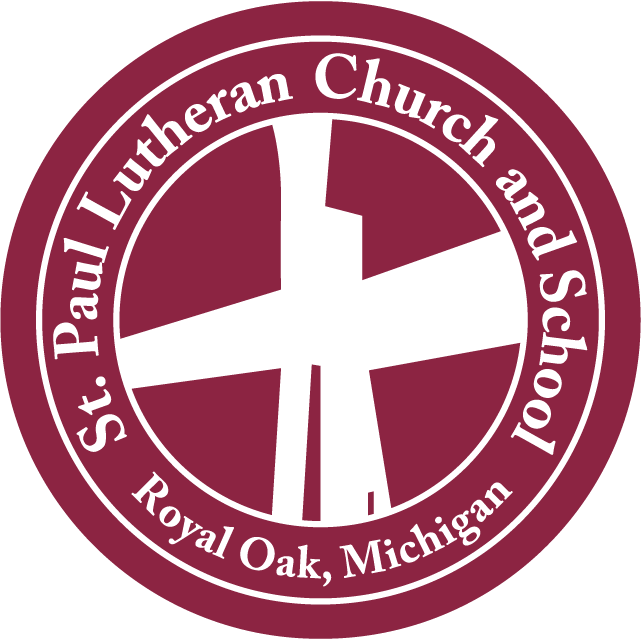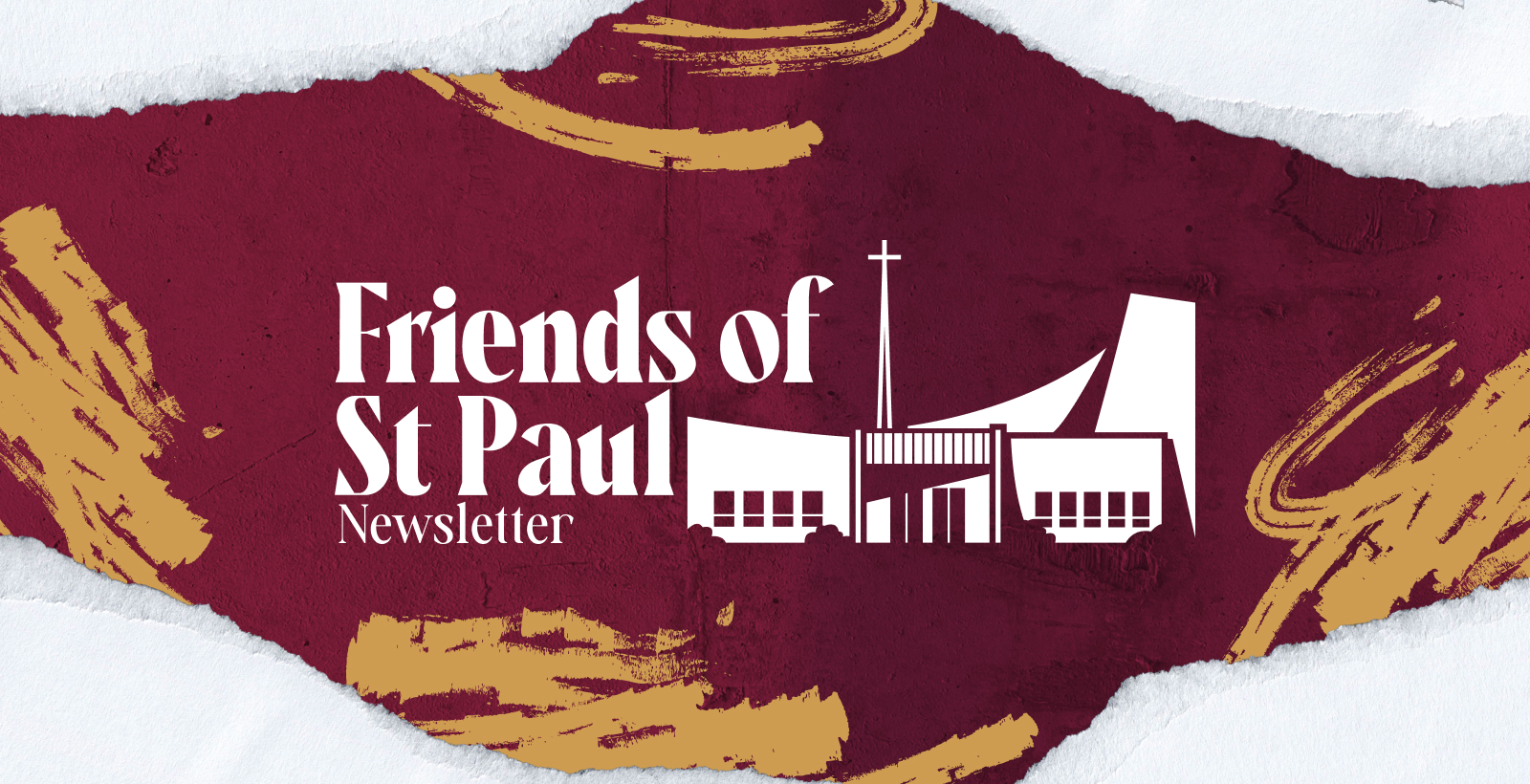21 Apr Friends of St Paul Newsletter – April 2023
In this newsletter, you’ll read about Mila Jackson’s St. Paul story and dig deeper into the history of the first 50 years of St Paul Lutheran Church and School.
“For the Lord is good and his love endures forever; his faithfulness continues through all generations.” – Psalm 100:5
Reminiscing on St. Paul – Mila Jackson
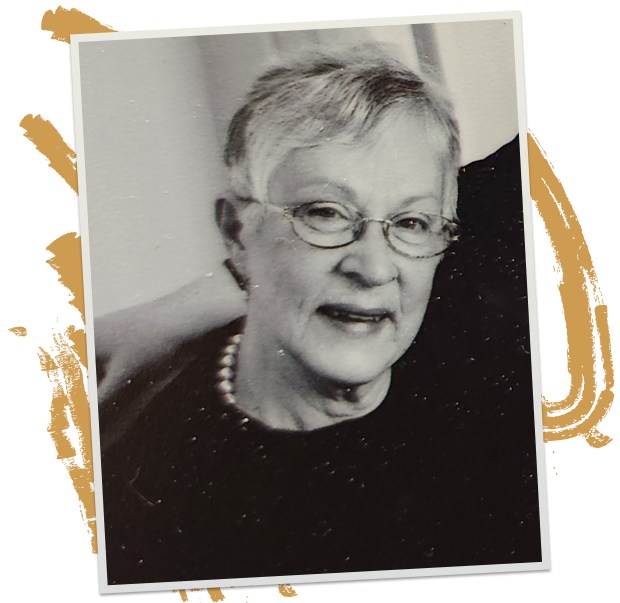
There are not too many families that can say they have 4 generations attending St. Paul today, but Mila Jackson is one of those few. Mila, her daughter Faith, her granddaughter Blythe, and her family including her husband Marshall, daughters Penelope & Amelia, and their youngest child Marshall are all part of the St. Paul family.
Mila was born in Eastern Kentucky, granddaughter to a Southern Baptist minister. For as long as she can remember, Mila has enjoyed Bible study, worship, and being active in the church – which continue to be priorities for her today.
“My faith in Jesus Christ, my Lord, is paramount in my life,” she said.
When Mila was 9 years old, she moved to the Cincinnati area where she eventually met her husband, Robert, in school. In 1969, Mila and Robert, along with their daughters Faith and Eva, moved to Michigan. Robert attended Wayne State to complete his doctorate degree and Mila was a high school teacher for Art, History and Drama. She taught for 15 years at St. Clement Catholic High School in Centerline.
Faith was looking for school options outside of the public school system to send Blythe. Mila remembered noticing this little school on Main Street as she would drive by. She saw the children on the playground and thought, “Why don’t we check it out?”
Mila shared that the staff were welcoming, supportive and worked well together, specifically Eric & Joan Pittman, Rita McClatchey, Rich Mahler and Greg Paul. Soon after, Blythe was enrolled.
By the time Blythe started, Mila had retired. Mila became a kind of “volunteer parent” because Faith was working. Mila became more engaged with the St. Paul staff to the point where she became a substitute teacher for the school and organized several plays. Though highly involved at the school, Mila, Robert, and Faith were not active in church or members yet.
Blythe loved this school the whole 8 years she was there and told her family she wanted to be confirmed at St. Paul. It only made sense to Mila and Faith that they become new members too, so they did in 1997. Mila shared there were a couple church members in particular who welcomed her and encouraged her to be active. John Lichtenberg was the first one to ever greet her with a warm welcome.
After Mila became a member, she shared how, “a small woman got right in my path and said, ‘I want you!’” and, just like that, Nona Keith recruited her to be a part of the Women’s Guild. This led Mila to become very active in annual bake sales, assembling bulletins and Mastheads, preparing funeral luncheons and attending retreats and Bible studies. She also got involved in the Board of Education and Altar Guild.
Mila has special memories during the time she served as the representative for the Lutheran Child and Family Services. They sold Christmas cards and had a program for children who were in foster care to give them presents at Christmas. She was overwhelmed by the generosity of the members of St. Paul. It was during this time that Mila was named St. Paul Woman of the Year. She felt very special to receive this thoughtful recognition from the congregation and district.
”I have a lot of women around me who are really strong Christian women, and it’s so important to have that in your life,” Mila said.
Along with the activities Mila has been active in over the years, she also had the opportunity to again use her talents and apply her passion for drama in the church. One Lenten season when Jeremy Schultz was pastor, he provided Mila the stories or themes for the Lenten services for that entire season and she converted them into theater presentations. Rather than having a sermon every Wednesday night, members and staff performed a short play. Another time, for Father’s Day, Pastor Schultz handed Mila his sermon and asked her to convert it into a kind of production, which Pastor Schultz then performed in front of the congregation.
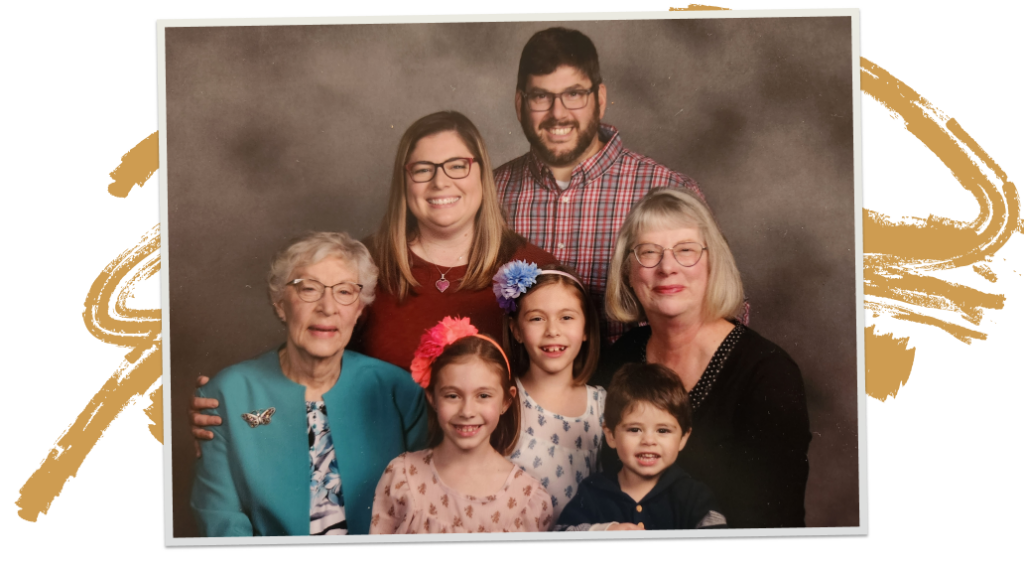
Mila shared how very proud she is of both her daughter Faith and granddaughter Blythe. Faith is active in the choir and is also serving on the Church Council as Secretary.
Blythe grew up in St. Paul, loved the school, and shared at a young age that she wanted to stay at St. Paul. Today, Blythe teaches the 3-year-old preschoolers at St. Paul. Even Marshall, Blythe’s husband, serves by reading scripture in service. Mila fondly shared that her great-grandson Marshall was also the first child baptized by Pastor Jakob Andrzejewski.
“I think of St. Paul not only as the church, but as a very close-knit family,” she said. “So many people can say how their parents and grandparents were here. I think it is a blessed situation. And now my little great grandchildren are in the school too. It just pleases me and makes me very happy!”
History of St Paul – First 50 Years, 1873-1923
Sources: St. Paul Lutheran 1943 Dedication Service Booklet, St. Paul Lutheran 125th Anniversary Booklet, History of the Evangelical Lutheran Church of Detroit and Vicinity, A History of St. Paul’s Lutheran Church
From its humble beginnings in 1873 to the present, the history of St. Paul Lutheran Church is filled with examples of how God has blessed and led this congregation to be His people here in Royal Oak.
St. Paul’s Evangelical Lutheran Church of Royal Oak, MI, was first organized in 1873 under the leadership of Rev. George Speckhard. He had been called from Sebewaing, MI, by an Association of Missouri Synod congregations. Their mission was to establish an Evangelical Lutheran Orphanage in the Detroit area, led by Rev. J.A. Huegli.
Rev. Speckhard was formerly a teacher for the deaf in Germany. He brought with him two deaf children from Sebewaing when coming to Royal Oak in order to continue his instruction with them in the Christian religion by means of sign language.
When it became known that he was giving religious instruction in sign language, it was requested that he accept other deaf children for instruction. Within 10 months, 15 deaf children had been brought to him. As a result of this, the Association decided to establish an Evangelical Lutheran Deaf Mute Institute instead of an orphanage. The Association also decided to move the location to North Detroit in 1879, where it still operates today.
In addition to establishing the orphanage that would later become a Lutheran School for the Deaf, Rev. Speckhard organized a congregation under the name of Immanuel Evangelical Lutheran Church, as well as the Christian Day School. The first church of the congregation stood on the corner of Main and Third Streets.
The first Lutheran communion service was held on October 5, 1873 with 21 communicants attending. By 1874, the church had 112 baptized members, 21 voting members and 25 school pupils. (In addition to these 25 students, seven orphans attended the school and 12 deaf children were instructed separately.) The church services and school instruction were all in German.
Rev. Speckhard continued to serve the Lutherans of Royal Oak, but without having a full time pastor, the congregation was split. Most of the members voted to leave the Lutheran Church and call a pastor of the Evangelical Church. Only four families remained true to the Lutheran church, and without a church building, met in a home on Sixth and Main Streets for their church services. Later, they rented an old Baptist church on North Main Street, reorganized and changed the name to St. Paul’s Evangelical Lutheran Church. Rev. Speckhard continued to serve the congregation until his death on November 20, 1879.
After the death of Rev. Speckhard, Pastor C.H. Rohe of Detroit shepherded the congregation until 1882, and Pastor K.L. Moll of Detroit then served until 1886. Pastor Julius Zuberbier was called in 1882 to jointly serve both St. Paul, Royal Oak and St. Paul, Clarenceville. It was during his tenure that the chapel was built on Williams Street, a small wooden building measuring 20×36 ft with a 7×10 ft vestibule added later.
This chapel served both as the house of worship and a school house until 1917, when the construction of the church began on the north-west corner of Fifth Street. On December 5, 1917, the first service was held in the basement of the new church, an Advent service. The chapel continued to be remodeled and in use for the school.
In August of 1887, Pastor Zuberbier left St. Paul, and Pastor Daniel C. Lochner was called from Maryland to take his place as pastor of the Royal Oak and Clarenceville congregations. Because of poor health, he left only a few years later in 1889.
Herman J. Kionka became pastor for both the Royal Oak and Clarenceville congregations from 1889-1893. In 1894, Emil Duerr was called to be the pastor solely for St. Paul, Royal Oak.
The congregation purchased the land on the south-west corner of Fifth and Williams Streets in 1894 to build a parsonage, with most of the work being done by members themselves. Pastor Duerr and his family were the first to occupy the house until he accepted a new call in 1896 to Wisconsin.
After Pastor Duerr’s departure, St. Paul Royal Oak had no resident pastor until 1916. In the interim, pastors of Detroit and Pontiac made regular visits to conduct church services and perform other pastoral work. The first of these was Pastor William Burmester of Detroit, who served the Royal Oak congregation from 1897 until his death in 1908. Pastor F. Haeuser of Pontiac served St. Paul 1908-1909 and Pastor Frederick Dreyer of Detroit served from 1910-1916. At this time, the congregation had about 150 baptized members, 100 communicant members and 21 voting members.
Around the year 1910, Royal Oak began to grow very rapidly with a population of about 1,071. During the next ten years, it increased to 6,007. In the same period of time, Royal Oak Township increased its population to 15,432. St. Paul was the only Lutheran Church in Royal Oak Township, from Seven Mile Road north to Pontiac. There were many Lutheran people among the thousands who moved to the Royal Oak area, and wisdom demanded that a resident pastor again be called. With the assistance of the Mission Board of the Michigan District of the Missouri Synod, Pastor Otto H. Frincke was called from Macomb, MI and was installed on September 17, 1916.
The Sunday School was also organized in September 1916 by Mr. Elmer Pfieger as the superintendent. The enrollment, including the Bible Class, was 247.
With the population of the surrounding territory increasing very quickly, the congregation continued to grow as well and the little chapel soon became too small for the ever increasing number of worshipers. Until 1916, German was used for church services almost exclusively. After the population growth, two services were held each Sunday morning, one in German and one in English.
The members soon realized that a larger and more modern building was an absolute necessity. With the encouragement and support of the Extension Board of Synod, in February 1917 the congregation resolved to build a new church, the goal being within the year.
On April 1, 1917, the plans drawn by architect and Grace Lutheran, Highland Park member Louis Klei were accepted for a brick church to be built in cruciform – meaning in the form of a cross. The upper and the cross beams of the cross were to be built first, with the other beam to be built in later years. The chapel was moved to the north-west corner of the property, the parsonage to the south-east corner, and ground was broken for the new church at the corner of Fifth and Williams Streets in May 1917. The cornerstone was laid on August 12, 1917 by Pastors Adolph Loeber and Herman Metzger, both of Detroit.
The new church was dedicated on the cold, snowy day of January 20, 1918. The total cost of the building with the furnishings amounted to about $35,000 and, of this, the Church Extension Board loaned $32,900 with about 2% interest. The one-manual pipe organ in the church, a gift of Trinity Lutheran Church, Monroe, MI, was installed and dedicated in November 1918.
In 1920, the congregation began making payments on the debt to the Church Extension Fund, but progress was very slow because of financial difficulties and the depression in the ‘30s. A committee was formed to make a plan to pay off the debt in 1939, but more detail will be included in a future newsletter for St. Paul’s next 50 years from 1923-1973.
While St. Paul’s Christian Day School had been periodically discontinued and restarted throughout the years, the present school was re-established on October 9, 1916 with 21 students the first year, and 32 students the second. The members firmly held the belief that the most important thing they could give their children is a good Christian education, and that the best means of giving such an education is a school in which religion is an essential part of the curriculum.
Pastor Frincke taught all eight grades for two years, five days a week, for all subjects including religion and optional studies of German reading and writing. Mr. William G. Schulenborg, a graduate of the Lutheran Teachers’ College in River Forest, IL, took charge of the school in September 1918. The school continued to grow, and by January 1, 1922 had an enrollment of 52 pupils.
As we review the past, it is with the words: “O give thanks unto the Lord, for He is good; and His mercy endureth forever.” As we gaze into the future, we pray: “God of mercy and of truth, abide with us.” May God be with us and bless our labors.
What’s coming up at St. Paul

St. Paul is sharing its 150th-anniversary celebration of ministry on Sunday, April 23rd with Lutheran Special Education Ministries (LSEM). Both of these historic ministries share ties to their origin here in Royal Oak. LSEM started as the Lutheran School for the Deaf and it grew to serve children with a variety of special needs. Rich Schumacher, Director of Operations for LSEM, Nicole LeGalley, Philanthropy Specialist, and Stacy J. McGhee, President/CEO will all be worshiping with the congregation of St. Paul and sharing their ministry during Bible Study between services.
St. Paul continues to celebrate 150 years as a congregation in Royal Oak by having guest pastors preach to us each month. Former St. Paul pastors, vicars, teachers, and LCMS leaders will all share God’s message, recognizing God’s work through this special congregation. The guest preachers also offer a great opportunity for other friends and former members to visit St. Paul in person.
Introducing the next three guest pastors:
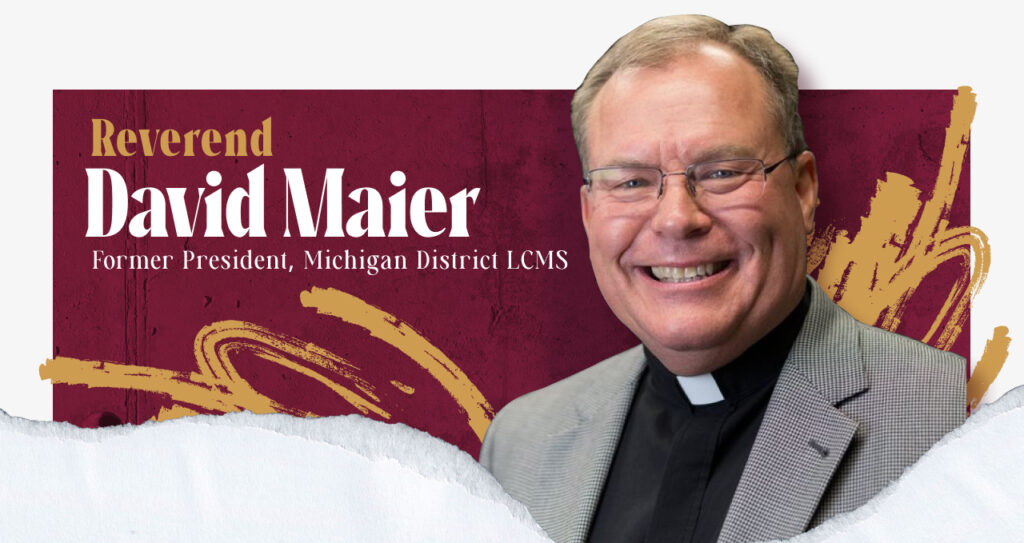
Rev. David Maier recently completed his 4th term as the President of the LCMS Michigan District. He will be the guest preacher on Sunday, April 23rd.
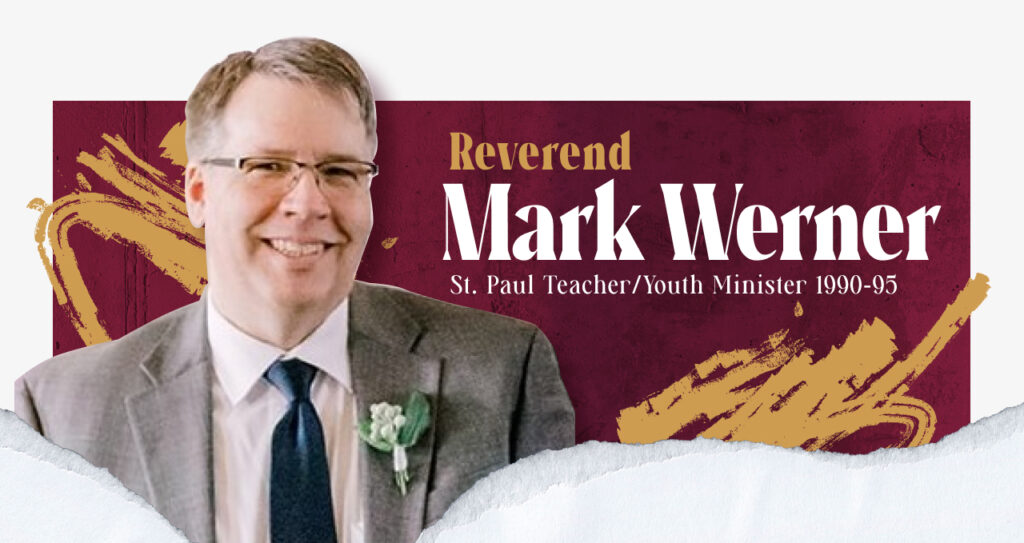
Rev. Mark Werner served as a teacher & youth minister at St. Paul from 1990 to 1995. He’s currently the pastor of Messiah Lutheran Church in Holt, Michigan. Rev. Werner will be the guest preacher on Sunday, May 21st.
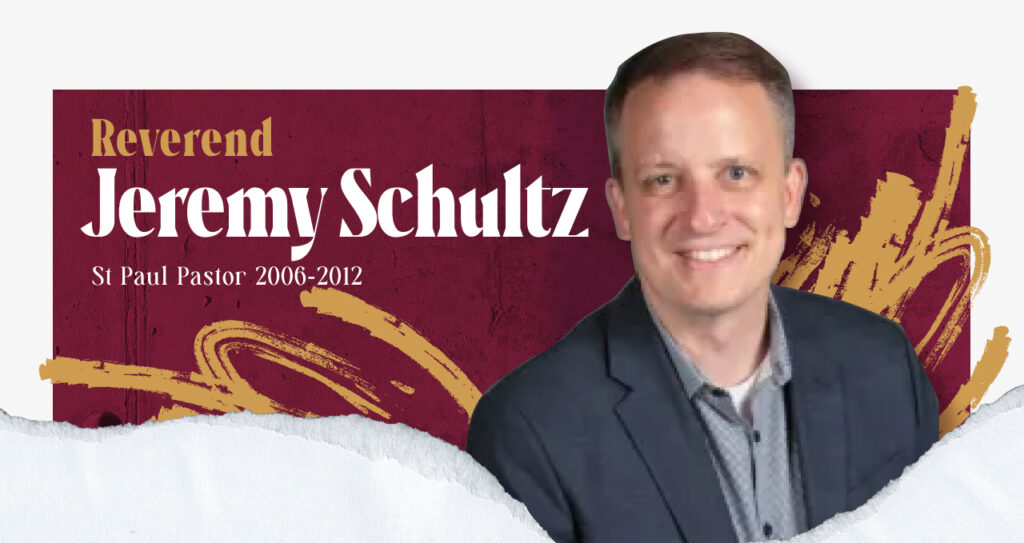
Rev. Jeremy Schultz was St. Paul’s pastor from 2006 to 2012. Presently, he is the senior pastor at St. John’s Lutheran Church in Alber, Missouri. Rev. Schultz will be the guest preacher on Sunday, June 25th.

Almighty Father, risen Savior and guiding Spirit, thank you for the work you have done for all of those who have come to faith in You through the 150 years of St. Paul Lutheran Church. Thank you for the education, support, and care provided to the countless children and families through the LSEM, encouraging those children to navigate the world with confidence, faith, and courage. For all of the good these ministries can reflect on, let them flourish, and have a greater impact in the future.
In Jesus’ name, Amen.
What Story is Next?
For all who subscribe to this newsletter, we encourage you to become an active part of this outreach opportunity! Please invite anyone you may know through St. Paul who may not be regularly engaged with St. Paul to subscribe. We also encourage feedback and ideas on what content works and what you would like to learn about.
If you have anyone (even yourself) who has a story to share or a picture or a memory, send us an email. We would welcome any historic pictures of events, baptisms, marriages, plays, retreats, or anything to bolster our historic picture album.
We Need Your Help!
We are looking for pictures or favorite memories from Field Days, Eighth Grade Graduation, Church Picnics, or Ice Cream Socials at St. Paul to share and celebrate its history. Please send your stories and photos to us.
Help Continue St. Paul’s Ministry
If you are interested in donating to St. Paul’s Capital Campaign, visit https://bit.ly/3ecOtgR

